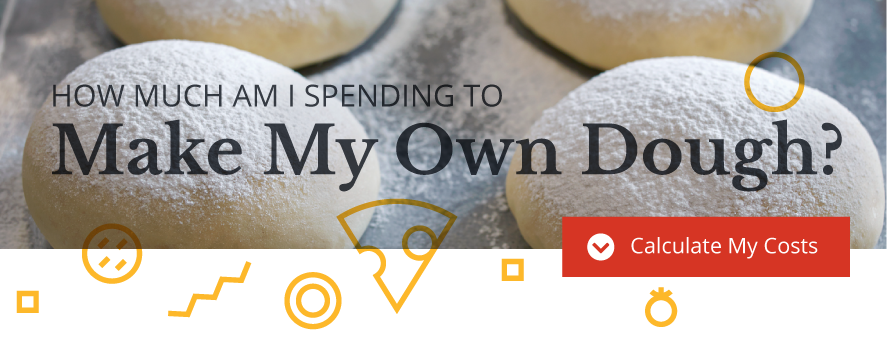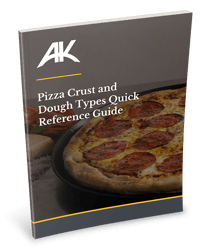
How do you determine the price of your pies — is it more instinct than an actual accounting of the costs that go into running your operation and making each pie? Many operators, especially those running small pizzerias, tell us that they pick prices based on what they think the market will bear, or that their prices are primarily based on “what the other guys charge.” Some say it’s even a little bit of guesswork and luck.
Basing your prices solely on one of these kinds of approaches, though, could mean you’re missing out on some profit. Pricing isn’t really an exact science, but it shouldn’t be left up to instinct, either. In this post we’ll take a look at all the factors that need to be considered as you determine the right price for your pies — and to ensure the long-term profitability of your operation.
Tips for Profitably Pricing Your Pies
To price your pies for optimum profitability, you’ve got to look at all these factors:
Ingredient cost
This is the easiest factor to pinpoint when pricing your pies. Some pies are just more expensive to make, like those with extra cheese or a variety of unique ingredients, so you should be accounting for these costs when you price each type of pie (and each size of every type of pie). As a rule of thumb, the food cost in the average pizzeria is about 30% in order to make a profit in the 20-25% range.
To keep food costs on target with your projections, you need to make sure your kitchen staff is using the correct amount of ingredients for each pie. This comes down to simple things like always weighing cheese and counting out pepperoni slices. Or at the very least, if you don't want to slow down the prep line by weighing, use exactly the same measure of cheese (i.e. 2 cups) every time.
Sales volume
The number of pies you sell each day should influence how you price them. The more pies you sell, the less your average cost per pie is – it’s called “economies of scale.” Whether you sell 20 pies an hour or 40 an hour, many of your costs (like labor and electricity, for instance) are the same, so your cost per pie is actually slightly less when you sell more. That means you can price your pies a little lower to attract more business, if you want, or you can keep them a little higher and make a bigger margin.
Depending on your location, your volume may fluctuate with the seasons; in that case you may want to increase your prices during months that are slow in order to make up for the deficit in volume. You need to be careful, though, that you don’t make it less likely that patrons will choose your pies by pricing them so high that you turn away customers.
Overhead
Don’t forget to capture all your overhead costs when pricing your pies: utilities, rent, payroll, insurance, etc., and keep in mind that some of these vary significantly with the seasons. Overhead includes everything from delivery boxes and paper products to dishwasher soap, cleaning supplies and landscaping services.
Additional Factors to Consider
What will the market bear?
You can charge more for a pie if you have evidence that patrons are willing to pay for it. Specialty pies, like those with signature crusts and unusual ingredients, can capture a higher price because patrons are willing to pay more for the uniqueness. But a simple pie that’s on par with competitors’, like sausage and mushroom, should be priced in line with the market. If your competitors are charging $16 for a sausage & pepperoni pie — and your quality is on par with theirs — then you can likely charge similarly, provided you've already weighed the factors above too (ingredient costs, sales volume, and overhead). Would charging a little less than the competition give you an advantage — or could you charge more and maintain your customer base? Keep a close eye on what your competitors are doing (and what the industry in general is doing) so you know how your pricing and methods compare, yet can still cover your costs.
Are your pies priced so you can run special promotions?
You’re going to want to run promotions that feature lower-priced pies (or pie and sides/drinks combos), so try to account for that when pricing the pies that are part of your standard menu. A good way to offset the reduction in price of promotional pies is to also focus on signature pies — those with lots of extras you can charge more for to make up the difference in profits.
One final bit of advice: review your menu every year and adjust pricing if you see margins narrowing. Patrons expect increases as cost of goods and services rises, but make sure every pricing decision you make is based on the factors above.
How much are you spending to make your own dough? Use our cost calculator to find out!






